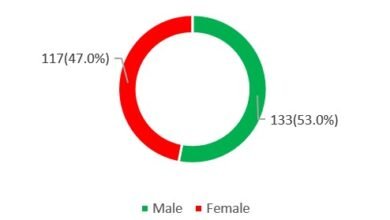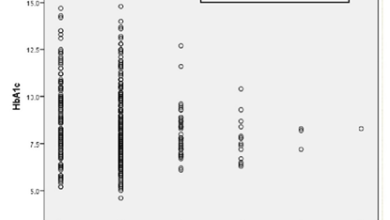Novel Microwave Based Non-Invasive Glucose Device
Global Journal of Diabetes, Endocrinology & Metabolic Disorders
Volume 1, Issue 1, June 2020, Pages: 12-20
Received: Mar. 17, 2020; Accepted: Apr. 17, 2020; Published: Apr. 27, 2020
Authors: Muhammad Rafaqat Ali Qureshi, John Shillingford, C. M. Handy, M. S. Chaudhry, Afon Technology LTD, UK
J. H. DeVries, Profil Neuss, Germany
E. Zijlstra, Profil Neuss, Germany
L. P. Mörschel, Profil Mainz, Germany
B. Love, Citalytics Inc, USA
Abstract:
Introduction:
Self-monitoring of blood glucose levels is a beneficial part of managing diabetes. It is a crucial part of an individual’s day to day routine as it can help with necessary lifestyle and treatment choices as well as monitoring for symptoms of hypoglycemia & hyperglycemia.
An individual with diabetes is required to monitor his or her blood glucose level and it is required that they record the daily glucose level readings during the day for patterns as well as allowing the person’s healthcare team to provide information about their daily glucose levels. There is a need for a new design within existing glucometers used by individuals with diabetes, which alleviates the need for frequent blood sampling using finger pricks.
Keywords: Glucose Device, Diabetes, Clinical Trials, Afon Device.
Download Full Article & Abstract here:
Copyright
© Copyright 2020, All Rights Reserved. Use of this content signifies your agreement to the T&Cs of Unified Citation Journals
This abstract of Manuscript/Paper/Article is an open access Manuscript/Paper/Article distributed under the Creative Commons Attribution License (https://creativecommons.org/licenses/by/4.0/) which allows and permits unrestricted use, distribution, and reproduction in any medium, provided the original work is properly cited and accepted.
This communication and any documents, or files, attached to it, constitute an electronic communication within the scope of the Electronic Communication Privacy Act (https://it.ojp.gov/PrivacyLiberty/authorities/statutes/1285)
To citation of this article: Muhammad Rafaqat Ali Qureshi, John Shillingford, C. M. Handy, M. S. Chaudhry, J. H. DeVries, , E. Zijlstra, L. P. Mörschel, B. Love, Novel Microwave Based Non-Invasive Glucose Device, Global Journal of Diabetes, Endocrinology & Metabolic Disorders
The number of devices has been developed to measure blood glucose using interstitial fluid, but these methods still require le system to collect the interstitial fluid and thus puncture the skin accordingly. There is a need for a truly non-invasive approach.
Non-invasive glucose monitoring (NIGM) has always proven a very elusive goal. We developed a non-invasive glucose monitor based on analysing resonance shifts from an applied signal in the microwave spectrum. Here we report the results of a proof-of-concept study.
Methods: Clinical trials were conducted in two research institutes (Profil Neuss and Profil Mainz, Germany) by applying the Afon device on the wrist to continuously monitor the resonance shifts with a change in glucose. The Afon device operates in the 1-10 GHz frequency range, sweeping the whole band every 45 seconds. Data collection was performed automatically by the device every 45 seconds for the duration of the study (no more than 10 hours). After the collection of baseline data (45 minutes), the subject’s BG was controlled via ClampArt, a fully automated glucose clamp device at levels between 50 and 350 mg/dl, with a starting point as adjudged by the study clinician based upon their resting BG level on commencement of the study day. Subjects were then clamped at, by way of example only, in 10 mg/dl steps (i.e. 60, 70, 80 90 mg/dl etc) up to the maximum of 350mg/dl. The glycaemia of each subject was clamped for approximately 30 minutes per clamp step. Reference Blood samples were measured by Super GL (Dr Müller Gerätebau GmbH, Freital, Germany) every 5 minutes.
Participants were subjected to appear twice in this study. Approximately, 120 blood samples were collected over the 10 hours period on the first day of study, and the same number of blood samples were collected on their repeat visit. Glucose estimates from the Afon device were derived on a per sample basis. For each sample collected on the first day of study, a model was developed based on the data collected from the Afon device and Super GL. When participants returned for their repeat visit, the model developed was applied to the measured data obtained on this visit in order to estimate the glucose levels. MARD (Mean Absolute Relative Difference) of the Afon device against Super GL glucose measurements was then calculated.
Results: Sixteen white male subjects (mean±SD age 31.5±9.38 years, BMI 25.9±2.92 kg/m2, diabetes duration 12.6±9.34 years) participated. Data from one subject could not be analysed as the subject didn’t appear for his repeat visit due to personal reasons. Paired non-invasive glucose monitoring -reference BG values were obtained (n=3593). Predictive MARD, using individual models from the data from the first clamp to predict data obtained at the second clamp, was approximately 21±9%.
Discussion: We have evaluated Afon device under both hyper- and hypoglycaemic conditions during clinical trials. Although much work still needs to be done, this study presents a potential and new technology for accurate estimation for non-invasive glucose monitoring using the high-frequency microwaves.
Correlation analysis revealed a strong relation between Super GL and Afon device values. Error grid analysis shows that 48.9% ,47.1% and 4% of Afon device-Super GL pairs are located in none, slight and moderate region respectively while no data were allocated in the severe to extreme as shown in figure 1. The Afon device is designed to be physically connected to a smart watch. By way of example the picture in figure 2 shows an Apple watch connected to the Afon Technology solution.
Tags
Diabetic Journals | Diabetes Medication & Care Journals | Diabetic Complications & Medicine Journals | Diabetes & Metabolic Disorders Journals | Glucose Metabolism Journals | Glucose Regulation Journals | Glucose Function Diabetic Journals | Glucose Structure Diabetic Journals | Glucose Metabolism and Diabetes Journals | Diabetic Journals | Blood Glucose Journals | Protein Controversies in Diabetes Journals







